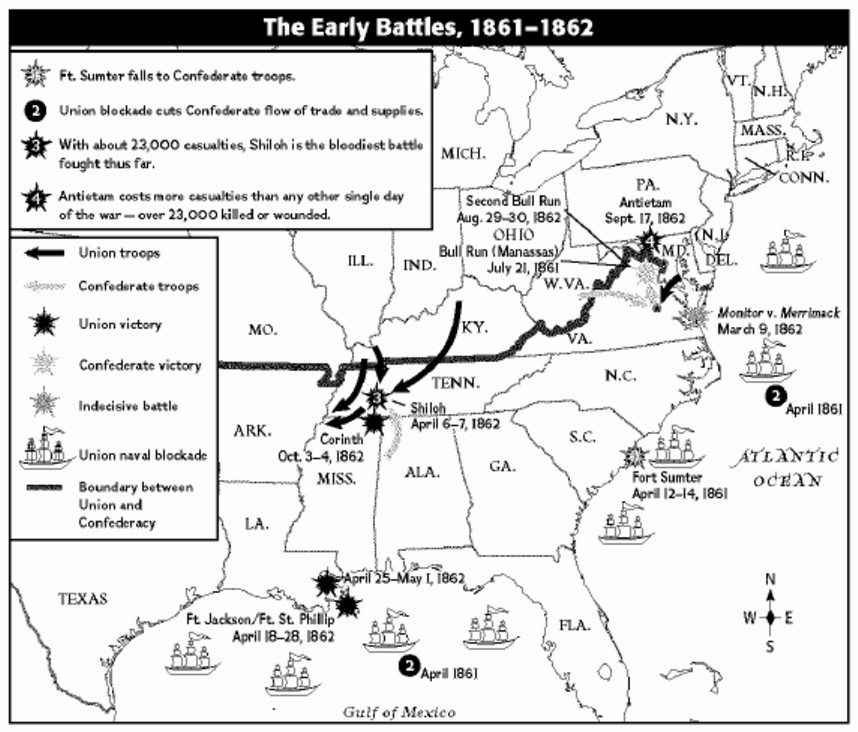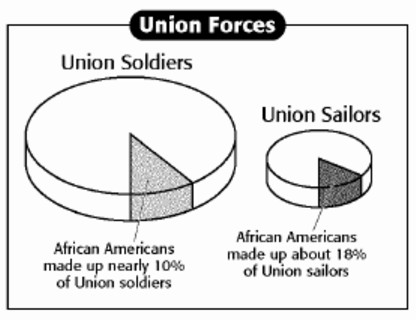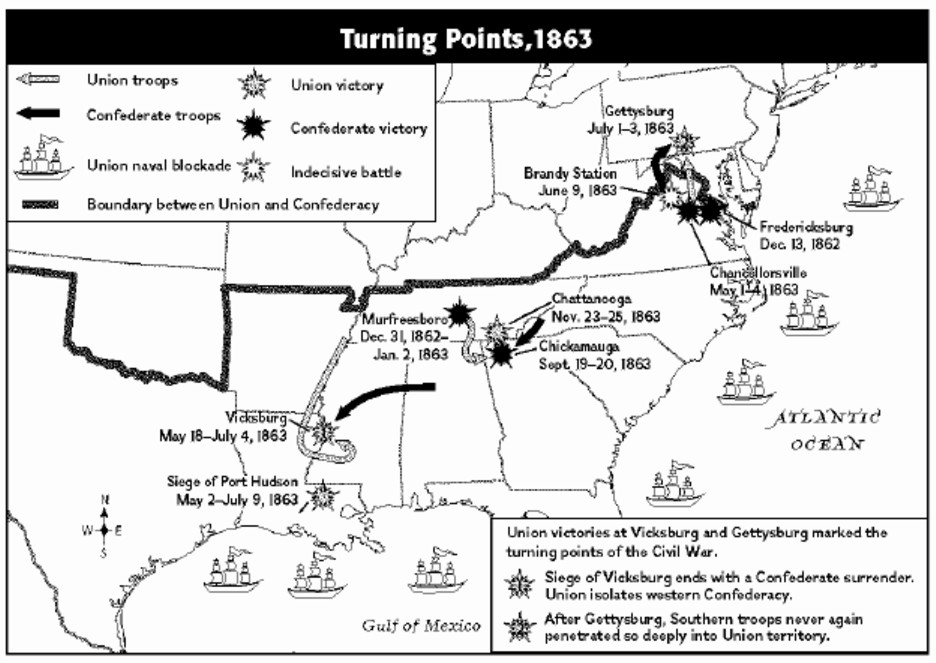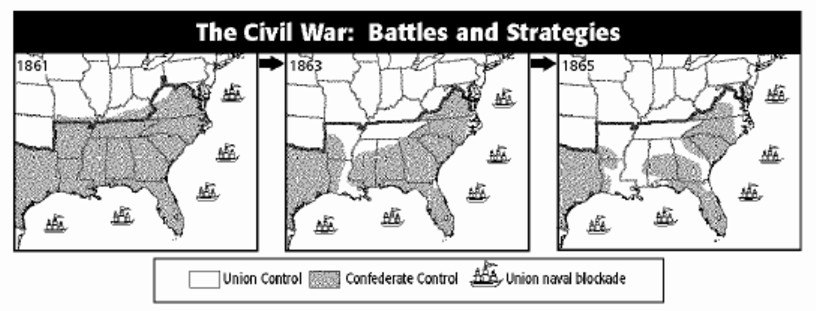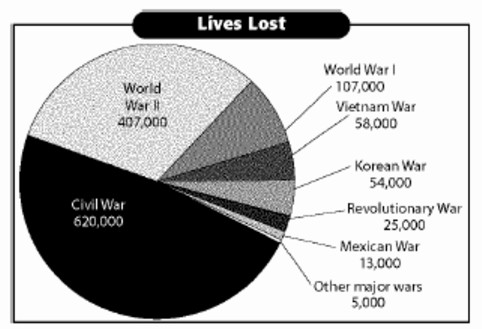DIRECTIONS: ANSWER THE 9 QUESTIONS IN BOLDD 200 WORDS EACH. NO PLAGIARISM!!! TURNITIN REPORT. I HAVE GIVEN YOU THE ANSWER IN THE LECTURE NOTES, I JUST NEED YOU TO READ IT AND COME UP WITH AN ANSWER OF YOUR OWN, NO REFERENCES NEEDED
1. Discuss the reasons why Americans were drawn to expand overseas in the late nineteenth century.
Lecture notes- DO NOT COPY NOTES, USE THEM TO HELP YOU ANSWER QUESTION
Territorial expansion had been part of American life from the beginning, but the 1890s marked a major transformation of America’s relationship to the rest of the world. Americans more and more saw their nation as an emerging world power. Until the 1890s, the expansion of the United States had been in North America, though ever since the Monroe Doctrine, many Americans had seen the Western Hemisphere as an American sphere of influence. Americans talked of acquiring Cuba, the Dominican Republic, and other territories, but the only territory acquired after the Civil War was Alaska, regarded by many as worthless. Most who looked overseas wanted to expand trade, not take new possessions. Many farmers and manufacturers believed that America’s production could no longer be absorbed in domestic markets, and thought “overproduction” was causing recurrent economic crises. They wanted foreign customers for their products.
Christian missionaries actively spread American influence overseas in the late nineteenth century. Groups like the Student Volunteer Movement for Foreign Missions believed it was their mission to prepare the world for Christ’s second coming and enlighten the heathens abroad. A few late-nineteenth-century thinkers actively promoted American expansionism. Josiah Strong, a well-known Congregationalist clergyman, tried to update manifest destiny in his book, Our Country (1885). He argued that Anglo-Saxon Americans, who had shown their ability for liberty and self-government in North America, should spread their institutions and values to “inferior races” overseas who, he suggested, would benefit American manufacturers by becoming new consumers of their goods. Naval officer Alfred T. Mahan, in The Influence of Sea Power Upon History (1890), argued that no nation could prosper without a large merchant fleet engaged in international trade and a powerful navy to protect it, which required overseas bases. Mahan insisted that with the western frontier closed, Americans had to look overseas for opportunity. Mahan influenced James G. Blaine, President Benjamin Harrison’s secretary of state, who advocated the acquisition of Hawaii, Puerto Rico, and Cuba for naval bases. In 1893, American planters in Hawaii organized a rebellion there that overthrew the native Hawaiian government of Queen Liliuokalani. Though Harrison asked the Senate to pass a treaty of annexation, President Grover Cleveland withdrew it. In 1898, during the Spanish-American War, the United States annexed the Hawaii islands. The depression that began in 1893 intensified Americans’ belief that an aggressive foreign policy would create markets for manufactured goods.
2. What were the origins and goals of the “new feminism”?
LECTURE NOTES
“Feminism” first became a widely used word in the Progressive era. Inspired by the writings of Charlotte Perkins Gilman, the Feminist Alliance, a small organization of New York professional women, developed plans to aid women in their community by building apartment houses with communal kitchens, cafeterias, and daycare centers, to free women from the constraints of the home. However, the women were unable to obtain a mortgage and the buildings were never built. In 1914, a mass meeting in New York that debated the question, “What Is Feminism?” was organized by Heterodoxy, a women’s club in Greenwich Village. New Feminism’s attack on traditional gender norms and sexual behavior added a new dimension to the idea of personal freedom.
Heterodoxy was part of a new radical “bohemia” (a social circle of artists, writers, and others who reject conventional rules and practices), and its definition of feminism merged calls for the vote and greater economic opportunity with open discussions of sexuality. Before World War I, in Greenwich Village and equivalent neighborhoods in Chicago, San Francisco, and other cities, a “lyrical left” took shape that included discussion clubs, experimental theaters, and magazines, and which anticipated the emancipation of the human spirit from nineteenth-century prejudices. Isadora Duncan’s new expressive dance was one symbol of the era.
Freedom was central to the lyrical left’s vision of society, but their individualist notion of freedom was quite different from other Progressives’ interest in order and efficiency. Yet sexual freedom came alive in this period. Free sexual expression and reproductive choice became critical elements of women’s liberation for many women. The sexual theories of the founder of psychiatry, Sigmund Freud, were popular. New sexual attitudes spread beyond bohemia to many young, unmarried, and independent women, and the new tolerance for sexual freedom drew gay people to Greenwich Village for the first time. But new sexual attitudes spread far beyond bohemia; they flourished among the young, unmarried, self-supporting women who made sexual freedom a hallmark of their oft-proclaimed personal independence
Women’s growing presence in the labor market strengthened demands for birth control, giving political expression to changes in sexual behavior. In the nineteenth century, the right to “control one’s body” meant the ability to refuse sexual advances, including those of a husband, but now it meant enjoying an active sexual life without necessarily bearing children. Emma Goldman, an anarchist and Lithuanian immigrant, regularly wrote and lectured about the right to birth control and called for a more enlightened view of homosexuality, and was arrested often. Margaret Sanger placed birth control at the center of the new feminism. By 1914, after facing censorship from the U.S. Post Office for writing about how to use birth control, she openly advertised birth-control devices in her journal, The Woman Rebel. She argued no woman could be free who did not control her own body and decisions about whether to become a mother. In 1916, when Sanger opened a clinic in a working-class area of Brooklyn and started giving contraceptive devices to poor Jewish and Italian women, she was jailed for a month. Labor radicals and cultural modernists, not just feminists, promoted Sanger and birth control. Sanger’s struggles illustrated the way in which local authorities and national obscenity legislation set rigid limits to Americans’ freedom of expression.
3. Discuss the reasons and the outcome of American intervention in Mexico.
LECTURE NOTES
The highly moralistic Woodrow Wilson brought a missionary zeal and sense of his own and America’s righteousness to foreign policy. He made William Jennings Bryan, an anti-imperialist, his secretary of state, and he repudiated Dollar Diplomacy and promised to respect Latin American independence and free it from economic domination. But Wilson believed the United States had a duty to instruct other nations in democracy and that American exports and investments spread American political ideals. For Wilson, American economic influence served a purpose higher than profit, and his “moral imperialism” made for more military interventions than any president before or since. He sent Marines to Haiti in 1915 and the Dominican Republic in 1916 to protect American financial interests; they stayed in the latter country until 1924, and in the former until 1934. Wilson’s foreign policy illustrates a lasting paradox of modern American history: presidents speaking most about freedom were likely to intervene the most in other nations’ affairs.
Wilson was most involved in Mexico, where a 1911 revolution led by Francisco Madero overthrew Porfirio Díaz’s long-standing dictatorship. In 1913, without Wilson’s knowledge but with the support of the U.S. ambassador and American companies controlling Mexico’s oil and mines, the military commander Victoriano Huerta assassinated Madero and seized power. Wilson was outraged, would not extend recognition, and vowed to “teach” Latin Americans “to elect good men.” When civil war erupted and Wilson sent troops to Vera Cruz to prevent arms shipments, they were met as invaders and attacked by Mexican troops. In 1916, after Mexican troops led by Pancho Villa killed Americans in a New Mexico town close to the border, Wilson ordered 10,000 American troops to invade northern Mexico to apprehend Villa. Revolutionary chaos continued during the next few years and Mexico provided a warning that it was potentially very difficult to use American power to control foreign policy.
4. Explain Woodrow Wilson’s vision for peace after World War I.
LECTURE NOTES
In May 1916, Wilson’s preparedness policy seemed to have worked, as Germany suspended submarine warfare against noncombatants, allowing Americans to trade and travel freely without requiring military action. “He kept us out of war” became Wilson’s campaign slogan in the 1916 presidential election. The Republican Party was reunited, and its candidate, Charles Evans Hughes, lost to Wilson by only a narrow margin, including the votes of women in western states.
Wilson acted quickly. On January 22, 1917, Wilson called for “peace without victory” in Europe, and expressed his vision of a world order including freedom of the seas, restrictions on armaments, and self-determination for all nations, large and small. Germany soon resumed its submarine warfare against ships sailing to or from Great Britain and sank several American merchant ships, gambling that it could starve Britain into submission before America intervened militarily. In March 1917, British spies made public the Zimmerman Telegram, a message by the German foreign secretary Arthur Zimmermann to Mexico asking it to declare war against the United States and regain its territory lost in the Mexican War. A revolution in Russia that deposed the czar and established a constitutional republic made it seem plausible to believe that the United States would be fighting for democracy. On April 2, Wilson asked Congress to declare war against Germany (which it did with a small minority of dissenters), in order to make the world “safe for democracy.”
By the spring of 1918, when American troops arrived in Europe, the communist revolution led by Vladimir Lenin in Russia the previous November had led to the withdrawal of Russia from the war. Lenin also exposed secret treaties by which the Allies had agreed to divide conquered territory after the war, embarrassing Wilson. In January 1918, Wilson reassured the public that the war was a righteous cause by issuing the Fourteen Points, stating war aims and providing his vision of a new international order. This involved self-determination for all nations, freedom of the seas, free trade, open diplomacy, the adjustment of colonial claims with the colonized, and the establishment of a “general association of nations” to preserve peace. Wilson believed that this organization, which became the League of Nations, would act like the kinds of commissions Progressives had established in America for ensuring social harmony and protecting the weak.
By September, nearly 1 million Americans helped turn the tide of the war and pushed German forces in retreat, especially in the Meuse-Argonne campaign. This campaign left 100,000 American soldiers dead and wounded, and was one of the most significant and deadliest battles in American history. With his forces retreating, on November 9, the German kaiser abdicated the throne, and two days later, Germany sued for peace. Over 100,000 Americans died, only 1 percent of the 10 million killed in the war.
5. How did leading voices on the left criticize the limitations of the New Deal? How did Franklin D. Roosevelt change the meaning of liberalism during his presidency?
LECTURE NOTES
If the New Deal did not end second-class citizenship for blacks, the 1930s saw the inclusion of other groups into mainstream American life. With Catholics and Jews in prominent posts in Roosevelt’s administration and new immigrant voters forming a base of the Democratic Party, the New Deal made ethnic pluralism central to American politics. The election of Fiorello La Guardia, an Italian-American, as New York’s mayor in 1933 represented the growing power of ethnic working-class voters. These ethnic groups experienced growing cultural assimilation, as immigration from Europe virtually halted, and movies, chain stores, and mass advertising penetrated immigrant enclaves. Unlike the coercive Americanization of the past, however, this Americanization incorporated ethnic identity and married it to American political ideals.
In the mid-1930s, for the first time in U.S. history, the left (including Socialists, Communists, labor radicals, and many New Deal liberals) strongly influenced American politics and culture. The CIO and the Communist Party in particular became the center of a social and intellectual impulse that helped reshape the boundaries of American freedom. The Communist Party grew from a very small and isolated organization into a mass organization. Although it never had more than 100,000 members at any one time in the 1930s, several times that number passed through its ranks. The Communists’ dedication to socialism appealed to a widespread belief that the Depression showed that capitalism had failed. But more important was the party’s constant activity on behalf of the unemployed, workers and unions, and civil rights for African-Americans. At the height of the Popular Front, when the Communists sought to ally themselves with socialist and New Deal liberals in movements for reform rather than revolution, the Communist Party was respectable. Even though tied to Stalinist Russia, the Communist Party ironically contributed to New Deal liberalism’s expansion of freedom and its pluralist conception of America.
The Popular Front vision of American society greatly influenced American culture, through theater, film, and dance. Its broadly left-wing ethos defined social and economic radicalism, not support for status quo, as true Americanism. Ethnic and racial diversity, unionism and social citizenship were what made America great, not the pursuit of wealth. The American “people,” seen by many intellectuals in the 1920s as fundamentalist and crassly commercial, were now proclaimed embodiments of democratic virtue. Artists and writers in the 1930s crafted socially meaningful work that depicted daily life for ordinary farmers and urban workers, and art about migrant workers and sharecroppers and that created by the people, such as folk music and black spirituals, were held to express genuine Americanism.
The Democratic Party, despite its new northern black and ethnic base of support, did not embrace ethno-cultural issues. But the Popular Front insisted that the nation’s greatness lay in its diversity, tolerance, and rejection of ethnic prejudice and class privilege. The CIO promoted and often embodied this idea of ethnic and racial inclusivity. It adopted cultural pluralism and welcomed groups previously excluded from the labor movement, such as blacks and Mexican-Americans. Yet, while Popular Front culture celebrated the promise of America, it did not ignore its tragedies and troubles, such as racial discrimination. This idea is best encapsulated in Martha Graham’s 1938 modern dance masterpiece, American Document.
The Supreme Court abandoned “liberty of contract” for a definition of American freedom based on civil liberties, and allowed free speech for communists, labor picketing, and initiated the repeal of numerous state laws that inhibited expression. Yet other groups also tried to restrict free speech. In 1938, the U.S. House of Representatives created an “Un-American Activities Committee” to ferret out disloyalty and “un-American” behavior and speech, and two years later Congress passed the Smith Act, which made it a crime to “teach, advocate, or encourage” the overthrow of government. Similar committees were established at the state level and used to intimidate communists and others on the left.
MORE NOTES ON SECOND PART OF QUESTION
The Great Depression and the New Deal also changed the meaning of freedom. Economic security became an essential element of how Americans thought of freedom. New Deal measures like the Social Security Act, which assisted the unemployed and elderly, and the Fair Labor Standards Act, which established a national minimum wage, guaranteed Americans the social conditions necessary for freedom. But the New Deal also expressed, and in some ways reinforced, the boundaries of freedom. Its programs benefited industrial workers but not tenant farmers, men far more than women, and whites far more than blacks who, in the South, were still denied basic rights of citizenship.
At his inauguration, FDR admitted that the Depression was not over and promised to do more to help the significant minority of Americans still in need of assistance. Encouraged by his massive victory, Roosevelt committed what many believe was an enormous error. Arguing that several Supreme Court justices were too old to perform their functions, he proposed that the president be allowed to appoint a new justice for each who remained on the Court past age seventy (six at that time). FDR’s goal was to change the balance of power on a Court that might invalidate Social Security, the Wagner Act, and other parts of the Second New Deal. Immediately, FDR was criticized as an aspiring dictator. Congress rejected the plan. But Roosevelt’s the “court-packing” threat seemed to persuade the Court to accept economic regulation by the state and federal governments. The Court soon upheld a minimum wage law; affirmed federal power to regulate wages, hours, child labor; and rejected challenges to Social Security and the Wagner Act. Chief Justice Charles Evans Hughes said that while “freedom of contract” did not appear in the Constitution, “liberty” did, and it required legal protections against social evils that menace the people’s welfare.
The Second New Deal slowed after the court-packing fight. Although the Housing Act, passed in 1937, signaled the first major effort to build homes for the poorest in America, the Fair Labor Standards bill languished in Congress for a year before it passed in 1938, banning goods produced by child labor, setting a minimum wage, and requiring overtime pay for more than forty hours of work per week. This established federal regulation of wages and working conditions, a radical departure from pre-Depression policies. In 1937, the economy slumped sharply after FDR, who saw economic improvements in 1936, had decreased federal farm and WPA work relief. This caused business investment, production, and stocks to also fall and unemployment to rise.
In 1936, in The General Theory of Employment, Interests, and Money, John Maynard Keynes criticized economists’ commitment to balanced budgets. He argued that massive government spending was needed, even at the cost of deficits, to sustain purchasing power and stimulate economic activity during downturns. By 1938, Roosevelt adopted this solution, known as Keynesian economics, and he asked Congress for billions for more work relief and farm aid. The New Deal had shifted from economic planning to economic redistribution and then to public spending. The Second New Deal was over.
6. How did women’s lives change during World War II? Lecture for chpt 22 attached
7. Why did World War II spur the growth of the civil rights movement? Lecture for chapter 22 attached
8. How did Lyndon B. Johnson make the Vietnam War his own? Lecture for chpt25 attached
9. How did the U.S. economy end up suffering both from inflation and high unemployment? Lecture for Chapter 26 attached



